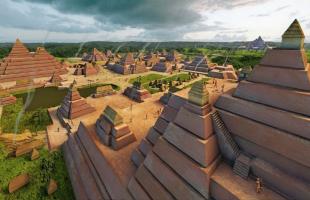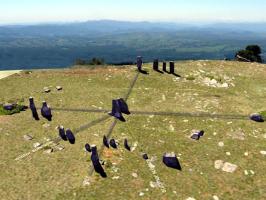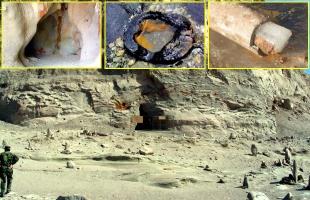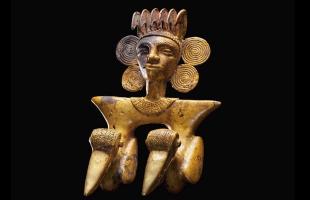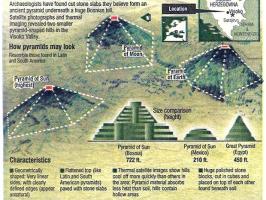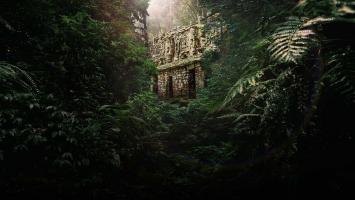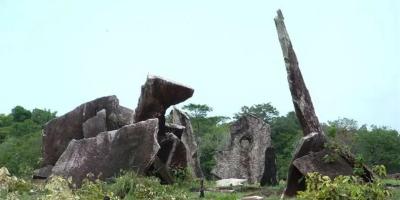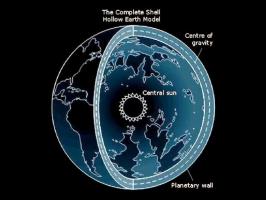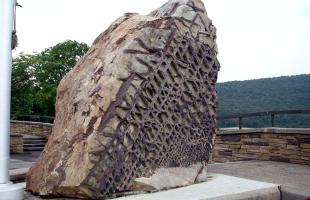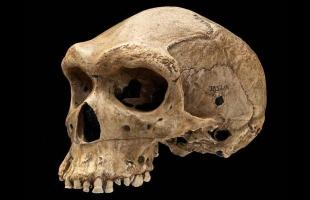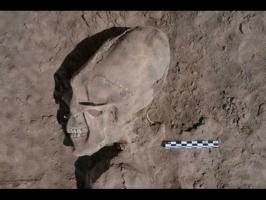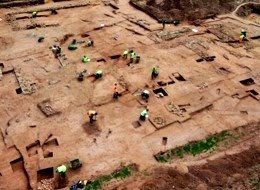The surprising hydraulic civilization of the Moxos
The surprising hydraulic civilization of the Moxos and the enigma of the modified lakes oriented on the southwest / northeast axis

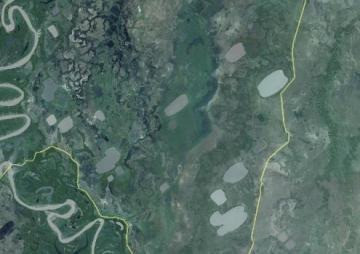
In the current Bolivian departments of Beni and Pando and in the Brazilian states of Rondonia and Acre, a very particular civilization developed in a period between the 3rd and 16th centuries, based on intensive agriculture and the construction of canals and embankments in order to dominate the course of enormous rivers.
In the same way as the extraordinary civilizations of the Euphrates and Tigris rivers (Sumerians), the Indus River, the Yellow River (China) or the Egyptian civilization that flourished around the Nile, the civilization of the Moxos (the original name was Musu) germinated in the vicinity of the immense Amazonian rivers Mamoré, Beni, Guaporé, Amarumayo (Madre de Dios River ) and Madeira.
The main characteristic of this great culture was the construction of artificial hills, embankments and canals in the Amazon flood plain, located between the Mamoré, Guaporé and Beni rivers, although also in the part located north of the Guaporé River.
The artificial hills were used both for living in non-flood areas, for ritual and funerary reasons, or to bury the bones of the deceased. The embankments served to create elevated areas for planting cereals, tubers, vegetables and fruit trees, while the canals served not only to channel water to areas to be irrigated or to artificially modified lakes, but also for fish farming, aquaculture and canoe navigation, namely, as means of communication.
In the alluvial plain located in the department of Beni, on the left slope of the Guaporé River, as well as in the area located to the north of the same river in Rondonia there are about twenty thousand artificial hills, for a total area of approximately 400,000 hectares, or that is, 4,000 square kilometers (not counting embankments and canals) of land transformed by man.
Therefore, the hydraulic culture of the Moxos, people of the Arawak language, achieved a high degree of control of the region and the floods, which in this part of the Amazon are seasonal.
Regarding relations with neighboring towns, we can affirm that the Moxos had frequent contacts with theIncas, although other ethnic groups lived between the territories of the two towns such as the Toromonas and Chunkos, who paid tribute and were considered vassals of the Incas.
When the Spanish arrived in Cusco, they learned of a very rich kingdom called Paititi, located in the low Amazon rainforest. The conquerors' excessive ambition for wealth was the driving force behind a flow of risky expeditions in order to try to reach and conquer the land of Paititi, which was said to be adjacent to that of the Moxos (on other occasions, it was described to Paititi and Moxos as the same land).
The first expeditions were led by Pedro de Candía and Pedro Anzures, in 1538 and 1540. The two adventurers only managed to cross the mountain range, but they could not enter the low Amazon jungle because they suffered many losses due to devastating diseases and attacks by natives.
The third expedition was led by Pedro Álvarez Maldonado in 1569, who, having been formally granted the Governorship of Paititi, an incredibly gigantic territory that in theory reached the line of Tordesillas, beyond which were the lands owned by the Crown from Portugal, managed to reach the mouth of the Heat River in the Madre de Dios River, in the ancestral territory of the Toromonas, but suffered many losses due to attacks by ferocious indigenous people and also strong conflicts with another group of Spanish adventurers led by the Captain Tardoya. He was then forced to return to Peru and abandoned the idea of conquering and colonizing the low Amazon rainforest.
The hypothetical Governorate of Paititi, an immeasurable territory of millions of square kilometers, remained only on the map, and the real conquest of the land of the Moxos and Paititi, which until then they had not even approached, was postponed to an uncertain date.
Ten years earlier (1558), another Spanish adventurer, Nuflo de Chaves, attempted to conquer the Moxos and Paititi from the south, going up the Paraguay River, but he too was forced to retreat after an arduous defeat on the battlefield, about 70 kilometers from the Guaporé River. In the following years, Nuflo de Cahvez occupied himself with the founding of Santa Cruz (1561) and with the internal conflicts with other Spanish captains, which is why he did not attempt the conquest of the Moxos or Paititi again.
Meanwhile, however, the viruses and bacteria of which the Spaniards and their animals (cattle, pigs, horses) were unconscious carriers, began to spread in the immense area where the Moxos had lived since ancient times.
We know nothing about the period between 1570 and 1650, eighty years of “vacuum” during which no European came even remotely close to this enormous territory, with an approximate area of 600,000 square kilometers, where the amazing hydraulic civilization of the Moxos.
In 1650, the Portuguese Antonio Raposo Tabares sailed along the Guaporé River to the Madeira River and then to the Amazon River, but he did not find any ethnic group that would hinder his passage. Meanwhile, the Spanish had built small missions in the low Amazon jungle, starting with Trinidad (1686) and San Ignacio de Moxos (1686), but they too did not find threatening and violent ethnic groups that would make their path difficult, probably because during the eighty years during which there was no contact, several smallpox epidemics decimated the population. It is as if the Europeans had sent the viruses in reconnaissance, and then entered with the colonization itself from 1660-1680.
The population that was present in the area continued to be very numerous and was made up of the Sirionó, Chacobó, Maropa, Cavina, Tsimane, Guarayo, Tapacura and Pauserna ethnic groups, but it was no longer united in a single and powerful confederation as until 1560; On the contrary, it was divided, weak and easily controllable.
The colonization and evangelization of Europeans also continued in the following century with the creation of the Spanish mission of Santa Rosa de Mojo on the eastern bank of the Guaporé River (1743) and other smaller ones such as San Miguel and San Simone. Later, the right bank of the Guaporé River was definitively occupied by Portuguese colonizers.
Over time, the ethnic groups that were part of the old confederation of the Moxos gradually lost their customs and their language.
To try to understand the complexity and importance of this great culture, we can today use not only archaeological studies in the territory, which allowed us to bring to light large quantities of ceramic finds and lithic instruments, but also aerial observation that It allows you to recognize grandiose canals, embankments, artificial hills and many lakes modified by man and oriented on the southwest/northeast axis.
In my recent aerial exploration, together with the research pilot Jorge Velarde, of the area located northeast of the city of Trinidad and adjacent to the Guaporé River, in addition to the Noel Kempff Mercado National Park, I was able to realize from above the extreme complexity of the territorial organization of the Moxos.
Apart from a considerable number of canals, embankments and artificial hills, I could see that most of the lakes were modified by man in ancient times. It was given a rectangular shape (in several cases more or less 2 x 4 kilometers), and was oriented on the southwest/northeast axis, as can be easily deduced from both the main photograph and the others.
Why were hundreds of lakes modified to orient them along the northeast/southwest axis? One possibility is that they have been transformed for a ritual-symbolic reason perhaps related to the observation of stars. In the southern hemisphere, looking towards the northeast, several stars can be observed: Deneb Algedi, Dabih and Capricorni in the constellation of Capricorn; Vega (Swan constellation), Arthur (Boötes), the Pleiades (Taurus) and Capella (Auriga).
Is it possible that the Moxos ethnic group had a cult for one of these stars? It is a mystery to which, for now, it is not possible to give definitive answers. Only with further field searches and archaeological excavations can we attempt to reveal this enigma, as well as other interesting questions about the daily life and religious beliefs of this little-known, but very important people in the context of the great civilizations of the past.
YURI LEVERATTO











